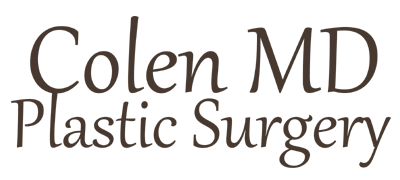After-Pregnancy Plastic Surgery
Why is it that we have this concept in our minds that, after a pregnancy, a woman’s appearance has to go to pot? It doesn’t have to be that way. Yes, it’s true that maintaining your physical appearance will likely become more of a challenge, but it’s a battle you can win! How? By doing the things you know to do: Get adequate exercise and eat right for starters. Plus there are a whole range of plastic surgery options that can help you. Let’s look at some of the most common–and most helpful–ones.
Vaginoplasty: In a regular vaginal delivery, it’s common for the woman to tear or damage the opening to the vagina. A vaginoplasty is done to repair this damage. As a result, the woman heals faster from these injuries. A plastic surgeon typically does this as an outpatient procedure under either general or local anesthesia. Recovery from the procedure will take only a few days.
Labiaplasty: After carrying and delivering large babies, sometimes the labia become large, elongated and dark. This can be repaired by a labiaplasty procedure where the labia are reshaped to normal size and pigment. A plastic surgeon who specializes in this procedure can perform this under sedation in an outpatient setting. Discomfort after surgery is minimal and recovery is usually quick.
Breast Augmentation: A common question for soon-to-be moms is whether or not they want to breastfeed. Some feel like breastfeeding will ruin the overall tone and shape of their breasts. Truthfully, it’s not the breastfeeding, but changes in the breasts themselves that occur during the pregnancy. Milk glands start swelling as they prepare to nurture the child. After the woman has given birth, the glands shrink, leaving an envelope of skin, with nothing to fill it. The result are breasts that sag. Through breast augmentation, implants allow the new mom’s breasts to their former youthful form. Breast augmentation is done on an outpatient basis with general or local anesthesia. There is an incision made under each breast, and it’s almost invisible. Stitches will be removed about one week after implants are inserted.
Abdominoplasty: This refers to a tightening of the abdominal muscles and skin. The place where a change after pregnancy is most visible is the woman’s abdomen. After all, it was home for nine months to another human being. However, following the pregnancy,,, this enlarged abdomen frustrates and depresses many women, even though they’re thrilled at having the new baby. An abdominoplasty removes this excess skin and tightens the muscles that stretched during the pregnancy. It also is helpful for getting rid of stretch marks. Many women choose to have this procedure done concurrent with a cesarean section and also sometimes if they are older at same time as a hysterectomy. This procedure is done under general anesthesia and could be done as an outpatient procedure. However, if done together with a hysterectomy or cesarean section then of course it is done in the hospital.
Liposuction: This refers to an area fat reduction. Liposuction is actually the most often-sought cosmetic surgery, and it’s especially beneficial for a new mom following pregnancy. Some new moms complain that they have difficulty losing "spot" fat in certain places, such as the buttocks, thighs or upper arms. This is usually because of having less time to exercise and slower metabolism. In a liposuction, a surgeon can re-sculpt your body and remove fat deposits in these targeted areas. Liposuction is done on an outpatient basis. If it’s only a small area, it’s done under local anesthetic with sedation; otherwise you might receive a general anesthetic. Liposuction is not recommended for those who are generally and significantly overweight.
So are any of these procedures right for you? That’s a personal choice, but they might be a beneficial way of restoring your pre-pregnancy look, along with lifestyle changes in your eating and exercising habits.
.

